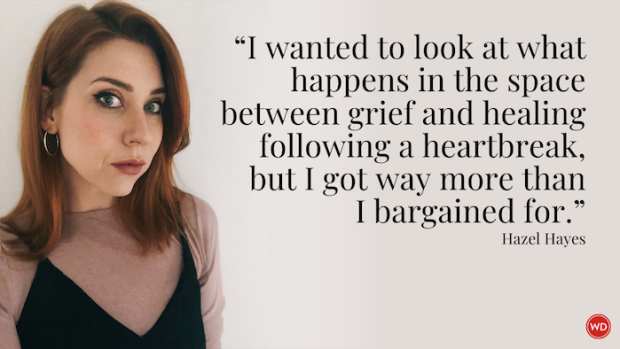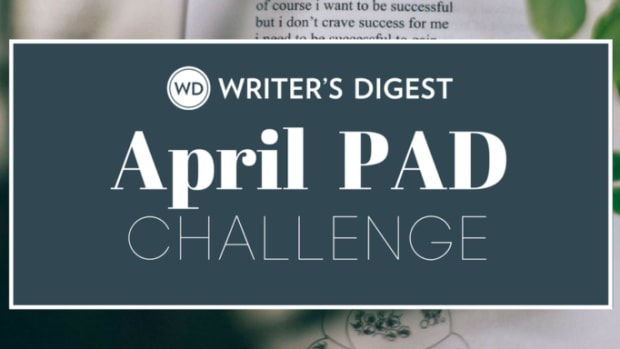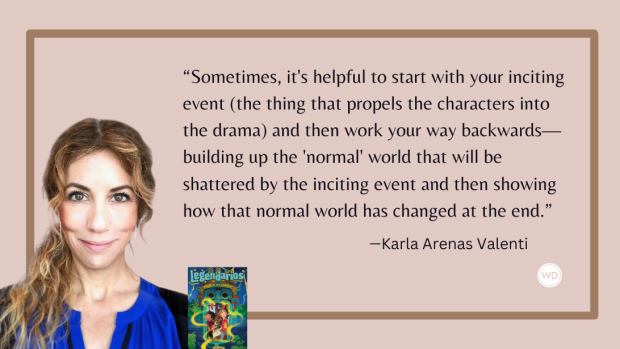Your Opening Quest
How many times have you opened a book, read the first few sentences and made a snap decision about whether to buy it? When it's your book that's coming under this casual-but-critical scrutiny, you want the reader to be instantly hooked.
The way to accomplish this is to create compelling opening sentences. And perhaps the best way to set that hook is to raise questions that suggest changes are coming.
OUT-OF-THE-ORDINARY
The easiest way to raise a question in the reader's mind is by opening with an action that's clearly a change from the normal or expected. Here are the opening sentences of Dan Brown's wildly popular The Da Vinci Code:
Louvre Museum, Paris, 10:46 P.M.
Renowned curator Jacques Saunieàre staggered through the vaulted archway of the museum's Grand Gallery. He lunged for the nearest painting he could see, a Caravaggio. Grabbing the gilded frame, the seventy-six-year-old man heaved the masterpiece toward himself until it tore from the wall and Sauniàre collapsed backward in a heap beneath the canvas.
Immediately, we wonder why a curator is tearing a painting chosen at random off the wall of one of the world's great museums. Why is Saunire staggering? What's he doing there so late at night? These actions are departures from the norm for museum curators, and few readers could resist continuing to find out what's happening, and why.
For a quieter tale than The Da Vinci Code (which features four murders in the first three pages), you may need a quieter introductory action. However, even a subtle opening action should raise questions. John Galsworthy accomplishes this with the opening sentences of his classic short story, "The Japanese Quince":
As Mr. Nilson, well known in the city, opened the window of his dressing room on Campden Hill, he experienced a peculiar sweetish sensation in the back of his throat, and a feeling of emptiness under his fifth rib. Hooking the window back, he noticed that a little tree in the Square Gardens had come out in blossom, and that the thermometer stood at sixty.
That Mr. Nilson doesn't usually feel this way is signaled by the words "peculiar...sensation" and "emptiness." The quiet action of looking out the window thus raises questions: Why does Mr. Nilson feel so strange? What does the tree have to do with it? The story—only three pages long—answers these questions by subtly opening out to show us a life of wrong choices.
Opening with action is an effective narrative hook. As you write the sentences describing your opening incident, ask yourself:
• Does this action suggest that a change has just occurred or is about to occur in my character's life?
• Will this action lead the reader to wonder why it's occurring, what my character will do next or what the consequences might be?
If the answer to either of these questions is no, consider opening with a different incident.
SETTING AND CHARACTER DETAILS
You can also hook a reader with provocative details about setting or character. Again, these should suggest that change is afoot.
Dean Koontz opens his bestseller The Taking with this ominous bit of setting:
A few minutes past one o'clock in the morning, a hard rain fell without warning. No thunder preceded the deluge, no wind.
The abruptness and the ferocity of the downpour had the urgent quality of a perilous storm in a dream.
That dream will turn out to be a nightmare. But note how quickly Koontz suggests both that this storm is different from all others and that something "urgent" and "perilous" is coming. Naturally, the reader wants to know what that is. Not bad for only 41 words.
In her mystery novel After All These Years, Susan Isaacs does the same thing with telling details about a key character. The book opens with these two sentences:
After nearly a quarter-of-a-century of marriage, Richie Meyers, my husband, told me to call him Rick. Then he started slicking back his hair with thirty-five-dollar-a-jar English pomade.
What's going on with Rick? Readers will have their suppositions (an affair, a midlife crisis, an identity change) and read on to see if they're right. Can you get readers to do the same for your story? You can if you open with setting or character details that:
• are very specific (the thirty-five-dollar-a-jar pomade; the storm without thunder or wind)
• promise conflict to come (How will the narrator react to her new, "improved" husband? What will follow this strange storm?)
• indicate a change from the norm for this place or this character
• make readers want to find out if their guesses are correct.
UNIVERSAL ASSUMPTIONS
Beginning a novel with a sweeping expository statement was common in the 19th century, giving us such famous openings as:
• "It was the best of times, it was the worst of times ..." (A Tale of Two Cities, Charles Dickens)
• "It is a truth universally acknowledged, that a single man in possession of a good fortune must be in want of a wife." (Pride and Prejudice, Jane Austen)
• "Happy families are all alike; every unhappy family is unhappy in its own way." (Anna Karenina, Leo Tolstoy)
This technique still works. An opening sentence of exposition—telling us something in the grand abstract—can be a remarkably effective attention-getter if it raises questions about the story to come. Consider the opening sentence of the first book in Janet Evanovich's successful mystery series about inept bounty hunter Stephanie Plum, One for the Money:
There are some men who enter a woman's life and screw it up forever. Joseph Morelli did this to me—not forever, but periodically.
The first sentence makes a general statement unconnected to any specific character or situation. Readers may or may not stop to ponder the truth of this pronouncement, but it's certainly provocative. The abstract statement is immediately followed by a second sentence that does give a few specifics: 1) We have a first-person female narrator; 2) her life has been screwed up by Joseph Morelli; and 3) the screwing-up wasn't permanent but has occurred more than once.
These specifics raise certain questions: How exactly did Morelli affect her life? Why did she permit it to happen more than once? Is she a victim or a volunteer? So we read on to find out the answers.
This technique turns up in the most surprising places. One of publishing's major successes in children's books is the Lemony Snicket series, A Series of Unfortunate Events. The 10th volume, The Slippery Slope, begins with an abstract (if unorthodox) discussion of Robert Frost:
A man of my acquaintance once wrote a poem called "The Road Less Traveled," describing a journey he took through the woods along a path most travelers never used. The poet found that the road less traveled was peaceful but quite lonely, and he was probably a bit nervous as he went along, because if anything happened on the road less traveled, the other travelers would be on the road more frequently traveled and couldn't hear him if he called for help. Sure enough, that poet is now dead.
This is followed by a scene in which two protagonists, both children, are indeed on a "road less traveled"—they're careening down a mountain in an out-of-control trailer. The off-the-wall interpretation of Frost's poem, followed by the kids' dangerous predicament, makes for an interesting contrast that heightens anticipation.
If you try this technique, keep three points in mind:
• It seems to work best with humor, because contemporary audiences consider sweeping pronouncements pompous and in need of puncturing.
• After your expository statement, don't delay too long before switching to action-suggesting specifics. The Slippery Slope gets away with an entire paragraph because it's the 10th book in the series and readers know that spicier stuff is coming. For a new novelist, one sentence of grand abstraction is enough.
• Make sure your opening still raises questions to absorb the reader: How did Joseph Morelli disarrange Stephanie Plum's life? Are the Baudelaire children going to end up as dead as the poet on the less-traveled road?
Questions that require answers are what keep readers going—and the place to start raising those questions is with your very first sentence.









